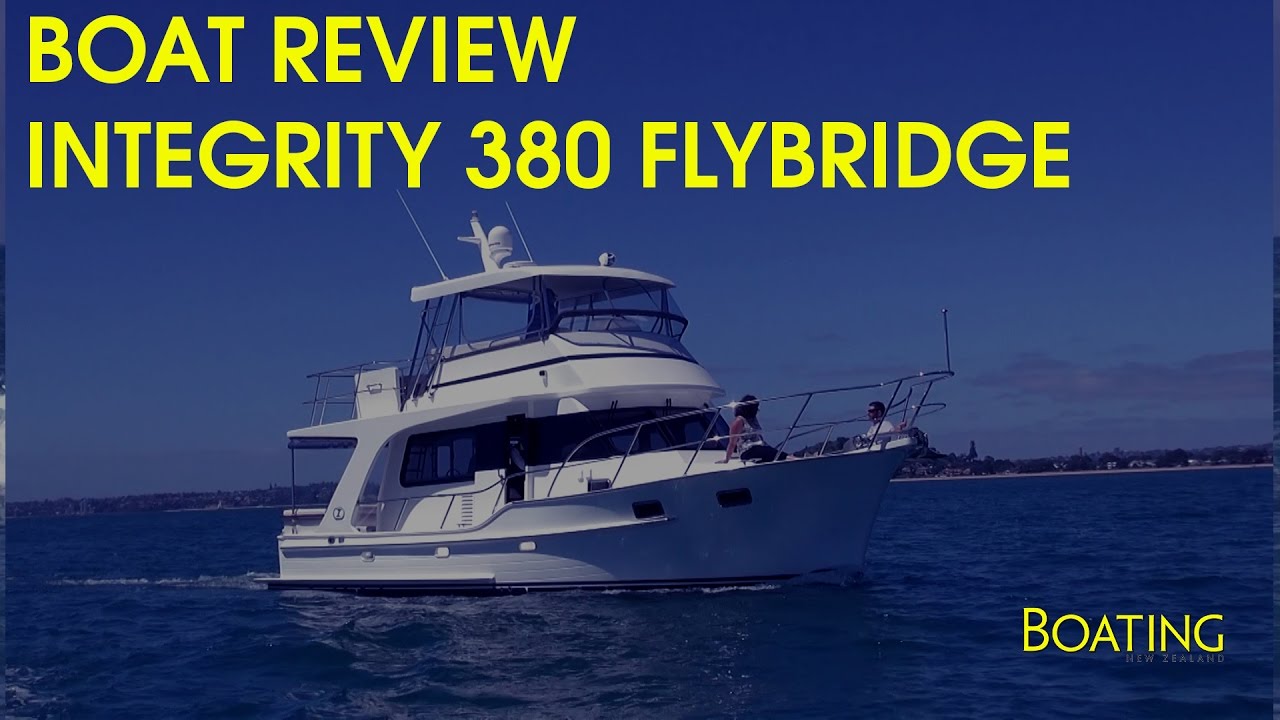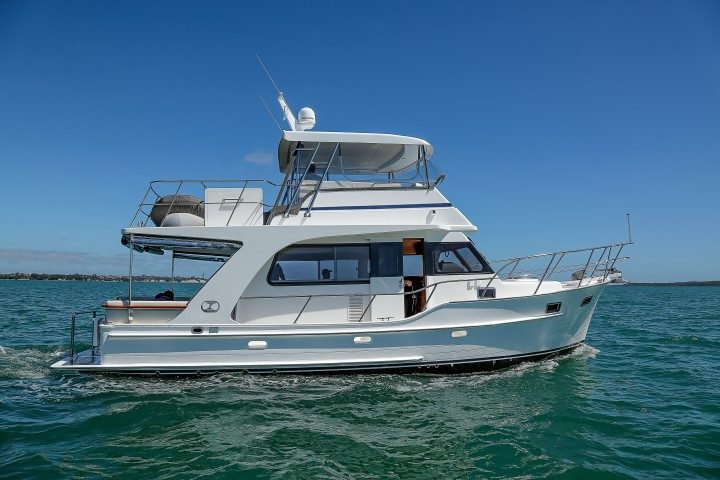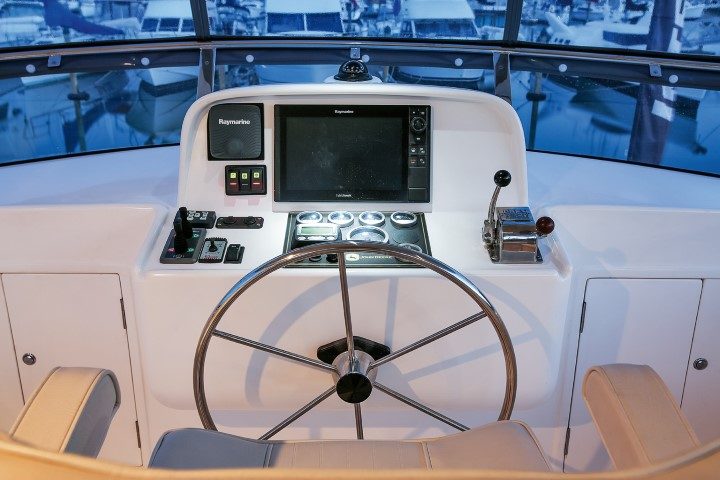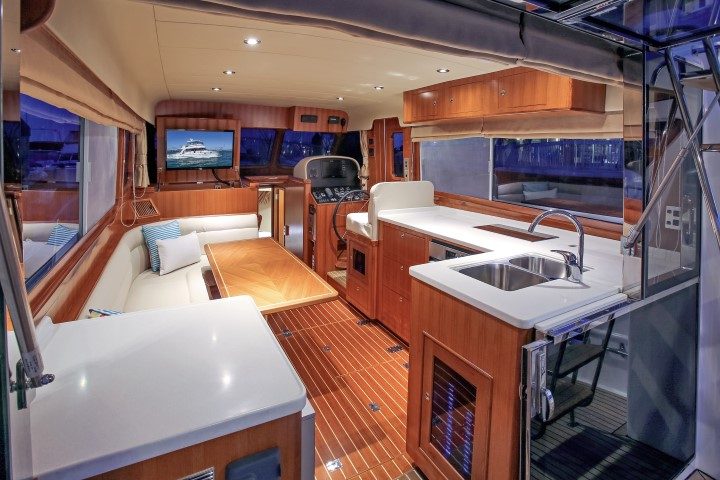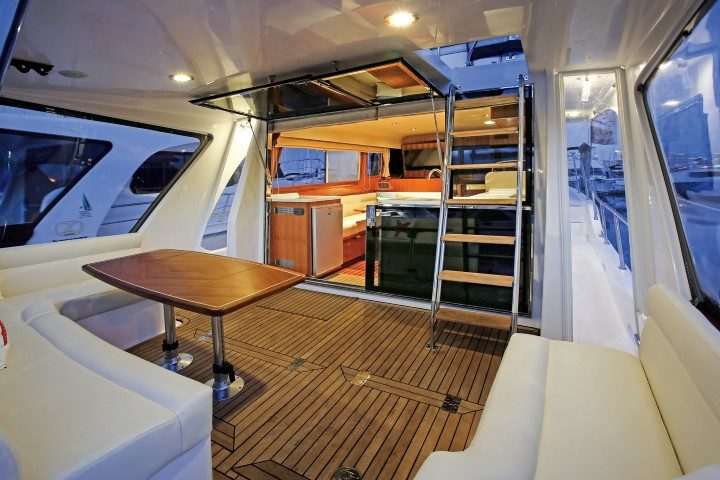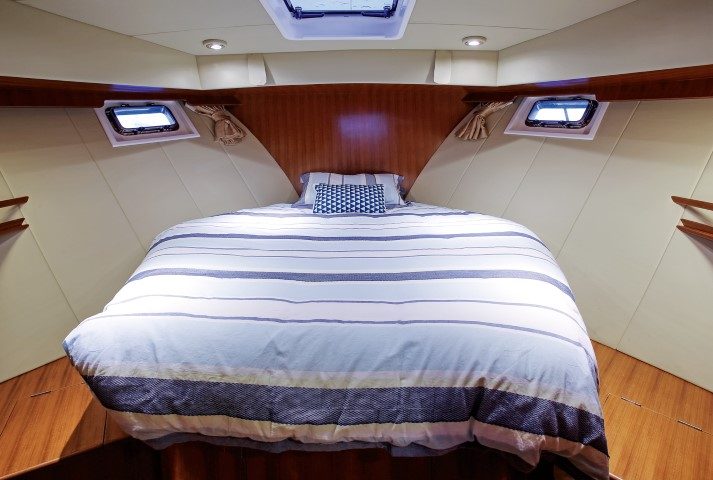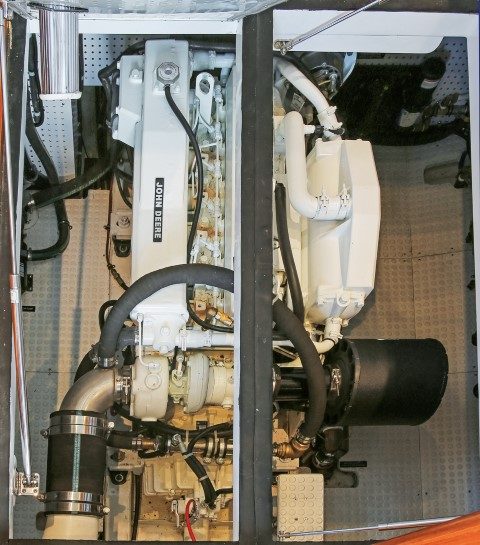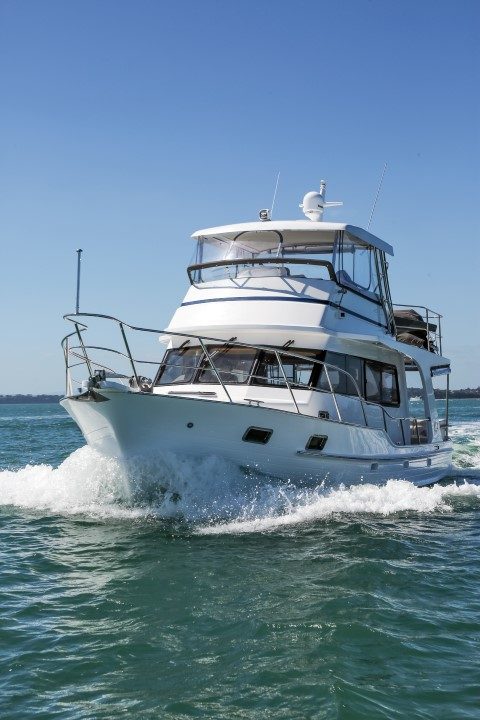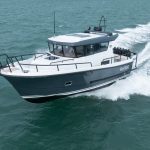‘Behemoth’ is a word which springs to mind or, perhaps more nautically, ‘leviathan’.
- Excellent interior volume
- Full length keel protects running gear
- Thrusters at both ends for easy docking
- Cockpit layout very practical
- Built in China and exported to USA, Europe and Australasia
- Pure displacement hull cruises at 8 knots
- Long-stroke John Deere a good match with displacement hull
- Solid GRP hull, Nydacore sandwich cabin top
- GRP flybridge hardtop; canvas bimini option

